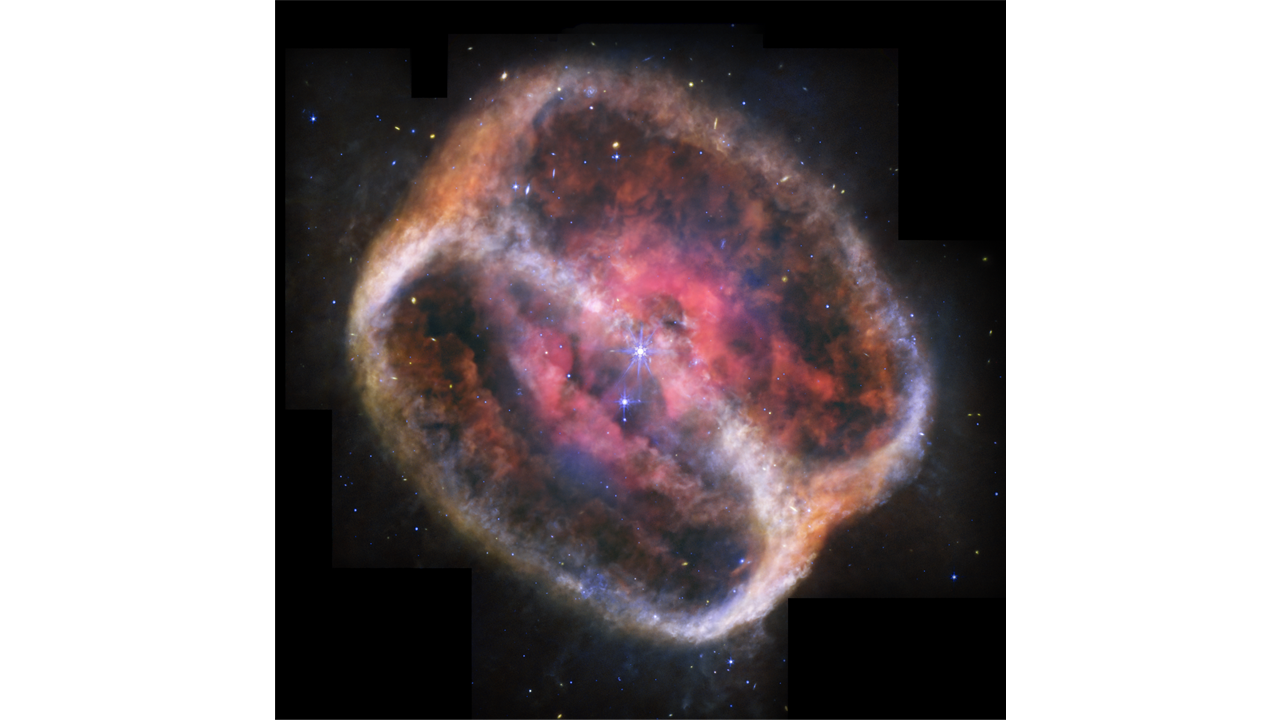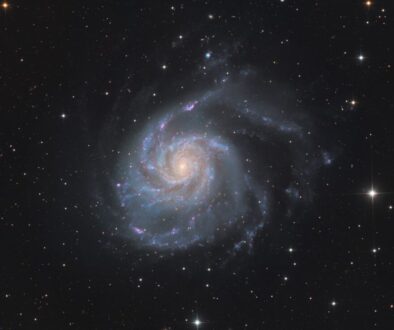With NASA’s Webb, Dying Star’s Energetic Display Comes into Full Focus
NASA’s James Webb Space Telescope has taken the most detailed image of planetary nebula NGC 1514 to date thanks to its unique mid-infrared observations. Webb shows its rings as intricate clumps of dust. It’s also easier to see holes punched through the bright pink central region. Credits: NASA, ESA, CSA, STScI, Michael Ressler (NASA-JPL), Dave Jones (IAC)
Gas and dust ejected by a dying star at the heart of NGC 1514 came into complete focus thanks to mid-infrared data from NASA’s James Webb Space Telescope. Its rings, which are only detected in infrared light, now look like “fuzzy” clumps arranged in tangled patterns, and a network of clearer holes close to the central stars shows where faster material punched through.
“Before Webb, we weren’t able to detect most of this material, let alone observe it so clearly,” said Mike Ressler, a researcher and project scientist for Webb’s MIRI (Mid-Infrared Instrument) at NASA’s Jet Propulsion Laboratory in southern California. He discovered the rings around NGC 1514 in 2010 when he examined the image from NASA’s Wide-field Infrared Survey Explorer (WISE). “With MIRI’s data, we can now comprehensively examine the turbulent nature of this nebula,” he said.
This scene has been forming for at least 4,000 years — and will continue to change over many more millennia. At the center are two stars that appear as one in Webb’s observation, and are set off with brilliant diffraction spikes. The stars follow a tight, elongated nine-year orbit and are draped in an arc of dust represented in orange.
One of these stars, which used to be several times more massive than our Sun, took the lead role in producing this scene. “As it evolved, it puffed up, throwing off layers of gas and dust in in a very slow, dense stellar wind,” said David Jones, a senior scientist at the Institute of Astrophysics on the Canary Islands, who proved there is a binary star system at the center in 2017.
Once the star’s outer layers were expelled, only its hot, compact core remained. As a white dwarf star, its winds both sped up and weakened, which might have swept up material into thin shells.
(Source: webbtelescope.org)




